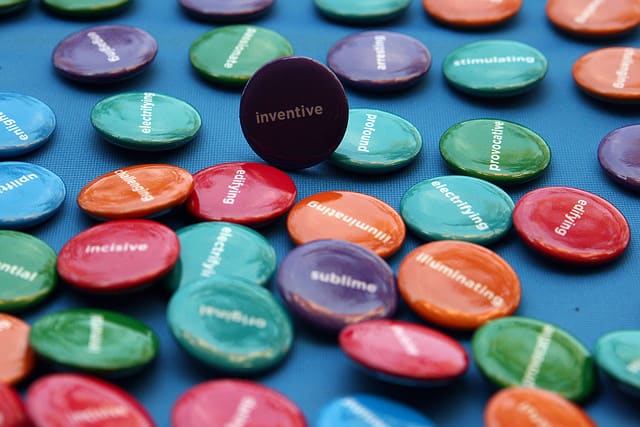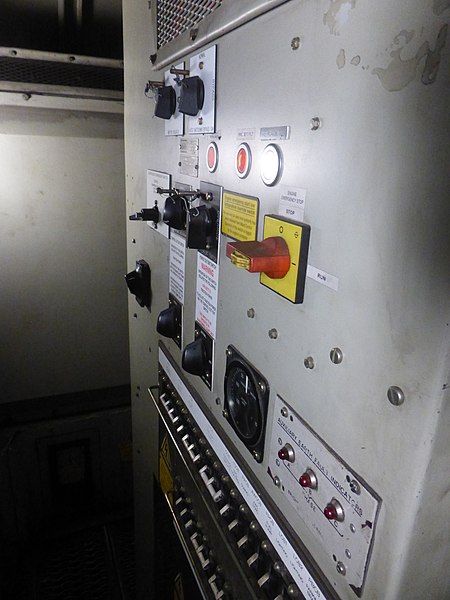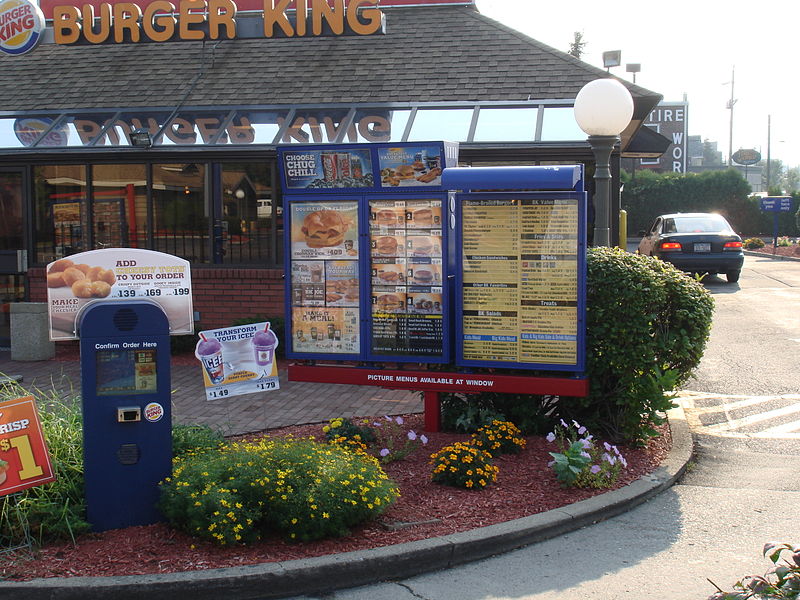
TRIZ is a Russian acronym for The Theory of Inventive Problem Solving. TRIZ began in the 1940s by a soviet engineer named Genrich Altshuller. He recognized that technological advancements follow a systematic and natural progression. As a result, Genrich invented TRIZ, creating common solutions that can be redeployed to business problems for specific improvements. The 40 Principles of TRIZ are like the old idiom, “Don’t reinvent the wheel.”
In other words, hundreds of really smart inventors have lived before today. TRIZ takes what is already created, adapts, and deploys it to solve today’s problems. Moreover, TRIZ uses tables of inherent contradictions and innovation principles, not trial and error, to reform the design challenge and remove physical contradictions.

- Define Your Specific Problem
- By this point in the DMAIC methodology, you should have a solid understanding of the problem that needs to be solved.
- Find the TRIZ General Problems that match your specific problem
- Identify which general solutions of TRIZ best apply to your specific problem.
- Lastly, apply the general solutions to your specific problem
Applying TRIZ
TRIZ works best in situations where other Six Sigma tools have not worked. Think of it as another way to find solutions that exist outside the normal process boundaries. You could use it during the Improve phase of the Six Sigma technique DMAIC (define, measure, analyze, improve, control) or the design phase of DMADV (define, measure, analyze, design, verify). (reference)
You are not expected to memorize all 40 principles as part of your Six Sigma preparation. Rather, you should be familiar with each TRIZ principle in order to recognize answers on the exam. With that said, each of the below principles has been paired with a brief explanation and examples.
Principle 1: Segmentation

Divide an object into similar sections to add value to the product.
- Different-sized cutting guards on hair clippers.
- Focal lenses on a camera
Principle 2: Taking Out or Extraction
Take out the unnecessary portions of a product or extract the most necessary portions. As a result, the product becomes streamlined.
- Self-check-in apps for dining-in restaurants (taking out long wait times)
- Music playing in restrooms (without the actual musicians)
- Take out lactose in milk, and the result is an allergy-friendly milk
Principle 3: Local Quality
Adjust item properties to fit user/application requirements.
- Ergonomic keyboards
- Pens with erasable ink
Principle 4: Asymmetry
Modify an object from a balanced state to an uneven state. Though contrary to nature, asymmetry adds value to a variety of products.
- Water bottles (small spout for easy drinking, large base to hold water)
- Pencil Grips
Principle 5: Merging, Consolidation, or Combining
Combine concepts, items, or systems with those of similar properties. Consequently, the objective becomes more lean.
- Printers that can print in color and black and white
- Roofers that put up Christmas lights during the winter season
Principle 6: Universality
Consolidate parts of an object into one singular function. With this in mind, the product receives a wider application of use.
- A tablet compared to a laptop when you are on the go.
- USB drivers verses CDs or floppy disks.
Principle 7: Nested Doll
Similar to Russian nesting dolls, objects fit inside each other. This allows for space consolidation.
- A portable chess set:
- Stackable chairs
Principle 8: Anti-Weight
Offset the weight of an object by combining it with things that provide lift. That is to say, the object has less weight.
- Hot air balloons
- Rockets
- Hydraulic car jacks
Principle 9: Preliminary Anti-action
Implement measures to control harmful actions or consequences DURING a necessary process.
- Cars with vehicle blind spot monitors in order to avoid collisions when changing lanes
Principle 10: Preliminary Action
Perform the required change in ADVANCE. To clarify, the action occurs before a process begins.
- Boxed furniture that contains pre-drilled holes for assembly
- Cell phone notification when power is low, which prevents the phone from dying
Principle 11: Beforehand Cushioning
In cases where there is low consistency, provide a means for cushioning the worse-case scenarios.

- Sprinkler systems in case of fires
- Emergency shut-off switches
Principle 12: Equipotentiality
Solutions that involve a change to an object’s environment enable the desired results compared to a direct change to the object.
- Laundry chute – using gravity to bring your laundry downstairs
Principle 13: The Other Way Around

Do it in reverse or opposite ways, such as drive-thru restaurants vs. sit-in diners.
Principle 14: Spheroidality – Curvature
Introduce a bend or shape to an object. In addition, this includes how the object moves.
- Archways expand the inside of buildings, which allows more room and improved acoustics.
- A drill gun’s motion compared to a hammer’s motion
Principle 15: Dynamics
Change an object or system in order to create optimal flow.
- Pressure valves for gas and liquid control
Principle 16: Partial or Excessive Actions
If optimal performance cannot be achieved, aim for more or less to create the desired effect.
- Using paint primer on an object before the actual painting process
Principle 17: Another Dimension
Take an object from one dimension or plan to two planes. This includes two dimensions to three, or vice versa.
- Spiral staircase compared to normal stairs
- A desk shipped pre-assembled versus assembled in advance.
Principle 18: Mechanical Vibration
Introduce vibration to an object. Though contrary to Six Sigma’s goal to reduce process variation, increased vibration is beneficial under the right circumstances
- Electric toothbrush, which allows for better teeth cleaning compared to a normal toothbrush
- Increased vibration in a foot massage leads to a better stronger massage
Principle 19: Periodic Action
Change a steady action to occur in intervals. This allows users to increase or decrease magnitude during the process.
- Lights and sirens on a fire truck notify other cars to move
- Spring-loaded nerf guns
Principle 20: Continuity of Useful Action

Continuous flow of a process or object. This can also include eliminating idle objects.
- Dams use falling water, thus generating electricity.
- Crossfit exercise routines, which consequently create a more complete workout.
Principle 21: Skipping or Rushing Through
Conduct at-risk or harmful stages at high speeds in order to avoid extra damage.
- Friction can heat up an object, which leads to warped material. Faster cutting speeds prevent more warping.
Principle 22: Blessing in Disguise – Harm into Benefit
Make the most out of harmful factors in order to create a positive effect.
- Composting, such as tossing egg shells into a garden to improve soil quality
- Rebuilding infrastructure after natural disasters
Principle 23: Feedback
Add performance data to a process or object. A Six Sigma example of feedback is Statistical Process Control.
- Automated survey inquiries allow people to receive quick feedback from customers.
- Audiovisuals on the TV so that viewers can know the TV volume
Principle 24: Intermediary/Mediator
Use an intermediary vehicle or process. In other words, using someone or something as a link between two processes.
- Using email in order to distribute communication to a group of people
- US Postal Services, which ships goods or letters between people
- Food processors so that people without teeth can eat, too!
Principle 25: Self-Service
An object or process that services itself or provides auxiliary assistance.
- Automated phone call screening so that callers are connected to the correct department.
- Car wash stations that include self-vacuum stations so that customers can clean inside and outside of their car!
Principle 26: Copying
Use less expensive material that is more accessible to replace expensive and less available parts.
- 3-D Printing
- Replacing metal components with high durable plastic ones
Principle 27: Cheap Short-Living Objects
Replace expensive, quality objects with multiple cheaper objects. This leads to a compromise on certain quality aspects, but provides lower costs.
- Glass plates and cups are nice until you need to wash them. However, paper plates and cups can be thrown away after use
- Washable diapers are cheaper compared to disposable diapers, but single-use diapers are more easy to use
Principle 28: Mechanics Substitution

Replace a mechanical system with an electronic, sensory, or chemical system.
- Dictation or saying words aloud to be typed compared to typing it out by hand
- A car fob can unlock the viable faster than using the car key slot
Principle 29: Pneumatics and Hydraulics
Use gas or liquid parts instead of solid parts.
- Hydraulic brakes compared to standard brakes
- Gel-filled insoles in shoes provide better foot support compared to standard insoles
Principle 30: Flexible Shells and Thin Films
Use flexible materials that are more durable, lighter, and cost effective.
- Bullet-proof vests are made out of light-weight material called kevlar, which is better than heavy metal for firearm safety
- Bubble wrap is great for shipping goods because of its extra cushioning
Principle 31: Porous Materials
Add holes (pores) to an object. This leads to a lighter and less dense object.
- Homes that use fiberglass for insulation
- Sponges to absorb moisture
Principle 32: Color Changes
Change the color of an object or the color around the object.
- Camouflage, which allows users to blend in to their environment
- Lighter colored homes reduce heat absorption from the sun.
Principle 33: Homogeneity
The interaction of two or more objects of the same material or purpose.
- Blood transfusions only work if the user has the same blood type as the donor
- Wooden dowels to join pieces of wood together
Principle 34: Rejecting, Discarding – Recovering, Regeneration
Reject or discard the object after completion or recover it after completion.
- SpaceEx launch spacecraft and the rocket returns to the launch pad after ascent. As a result, the cost of space travel is reduced
- Climbing the career ladder by changing jobs
Principle 35: Parameter Changes
Includes any input/output change such as temperature, durability, or pressure. Lots of things can fit in this bucket!
- Move into a larger work space in order to increase output
- Cakes batter baked at a lower temperature makes a better cake
Principle 36: Phase Transitions
Gradual changes to certain specs such as volume or pressure.
- Switching gears in a vehicle, which reduces gas consumption
- Move objects to cooler temperatures such as a fridge to decrease its heat
Principle 37: Thermal Expansions

Use heat or pressure in order to achieve desired results.
- Use heat to expand pipes so that they can connect. Cool pipes to cement them
Principle 38: Accelerated Oxidation
Replace common air with oxygen rich air.
- Ventilators assist to treat patients that struggle to breath
- Oxygen rich air is better fuel for fire, which can be applied during heat treatment
Principle 39: Inert Atmosphere
Negate moving or changing settings with less mobile or chemically inactive spaces
- Fire extinguishers work to move oxygen way from the flames. This results in putting out the fire
- Vacuum sealed bags are great space savers because the air is taken out of the object
Principle 40: Composite Materials
Unlike principle 5, composite materials combine different types of materials together.
- The body of an aircrafts is made of metals, foam, plastics, kevlar, and more. The principle also applies to the insides of vehicles.
IASSC Green Belt Sample Question
Question: Which of the following ideas best follows the TRIZ principle of “The Other Way Around?”
(A) Using hydraulic technology over gas-powered equipment
(B) Utilizing a trash compactor to maximize tonnage per pickup
(C) Baking cookies at a higher temperature
(D) Escalators in an airport or mall
Answer:
D: “The Other Way Around” (Principle 13) refers to the opposite way of doing something. Stairs requires people to move in a stationary environment whereas escalators create a moving environment while the people remain stationary.
Additional Resources
https://www.aitriz.org/articles/40p_triz.pdf – This is a great book extract for anyone who wants to practice TRIZ.

